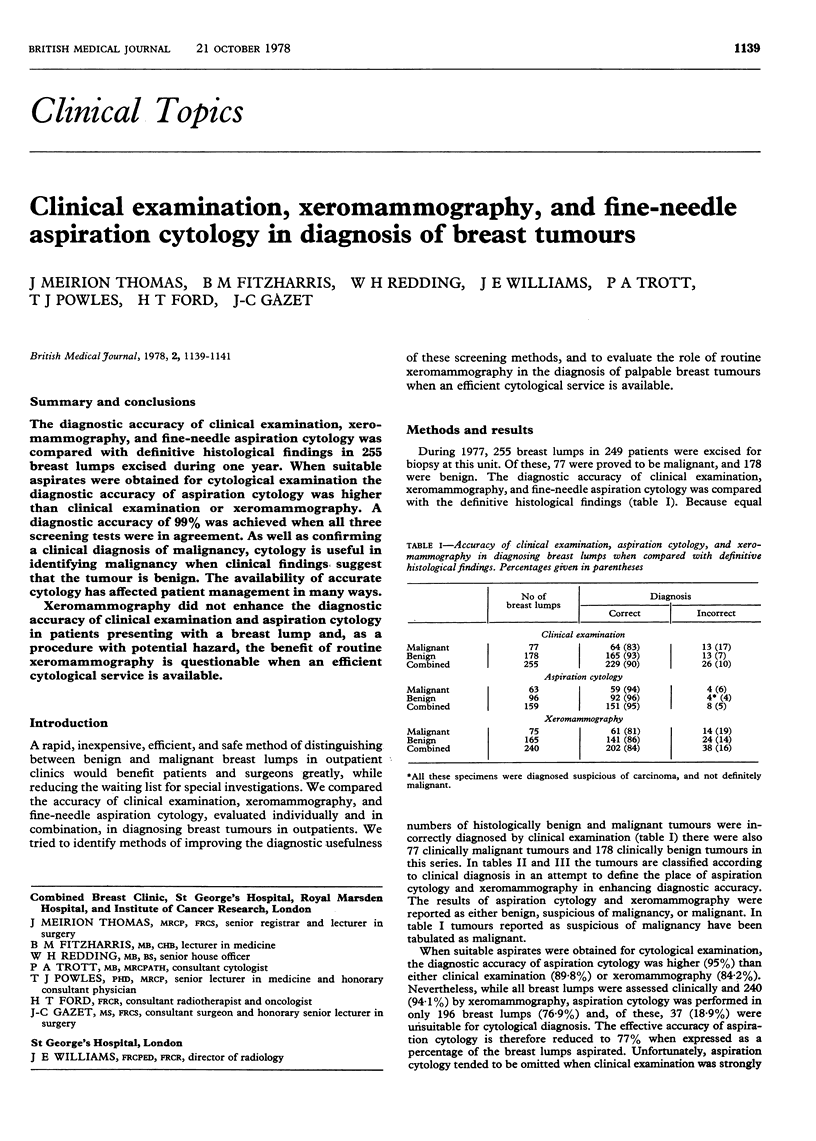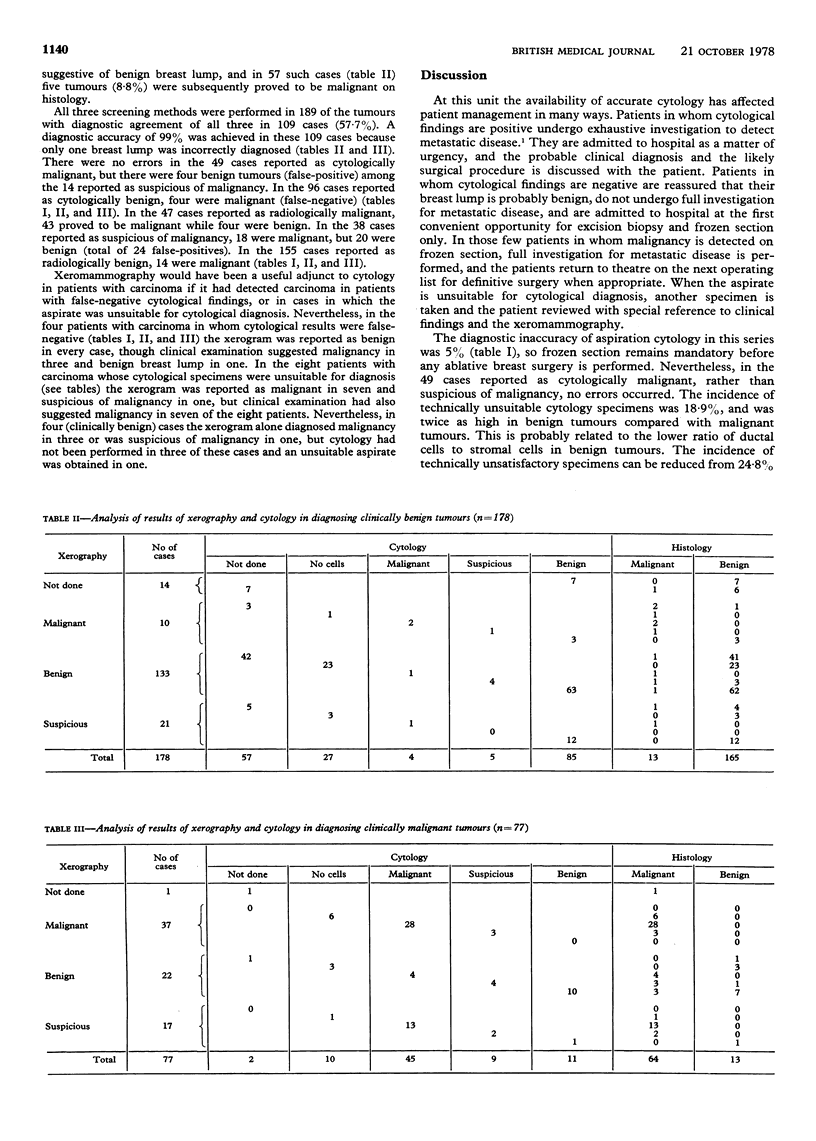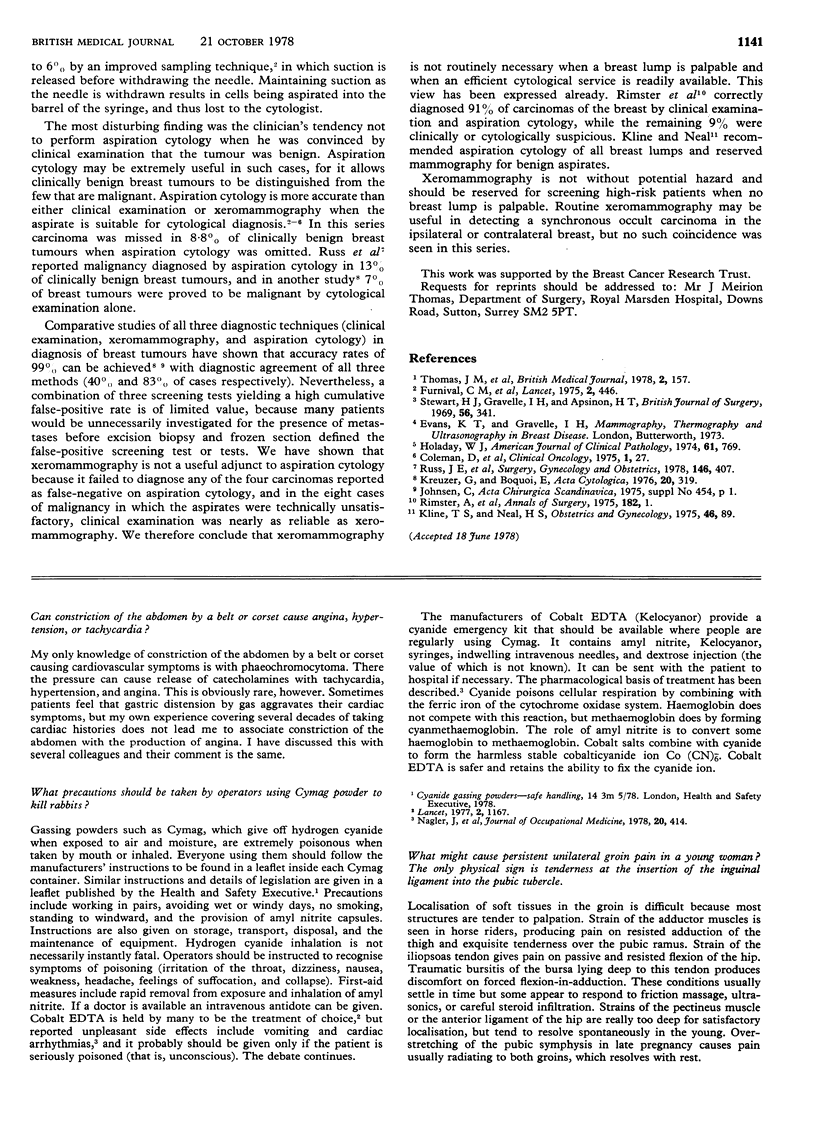Abstract
The diagnostic accuracy of clinical examination, xeromammography, and fine-needle aspiration cytology was compared with definitive histological findings in 255 breast lumps excised during one year. When suitable aspirates were obtained for cytological examination the diagnostic accuracy of aspiration cytology was higher than clinical examination or xeromammography. A diagnostic accuracy of 99% was achieved when all three screening tests were in agreement. As well as confirming a clinical diagnosis of malignancy, cytology is useful in identifying malignancy when clinical findings suggest that the tumour is benign. The availability of accurate cytology has affected patient management in many ways. Xeromammography did not enhance the diagnostic accuracy of clinical examination and aspiration cytology in patients presenting with a breast lump and, as a procedure with potential hazard, the benefit of routine xeromammography is questionable when an efficient cytological service is available.
Full text
PDF


Selected References
These references are in PubMed. This may not be the complete list of references from this article.
- Coleman D., Desai S., Dudley H., Hollowell S., Hulbert M. Needle aspiration of palpable breast lesions: a new application of the membrane filter technique and its results. Clin Oncol. 1975 Mar;1(1):27–32. [PubMed] [Google Scholar]
- Furnival C. M., Hocking M. A., Hughes H. E., Reid M. M., Blumgart L. H. Aspiration cytology in breast cancer. Its relevance to diagnosis. Lancet. 1975 Sep 6;2(7932):446–449. doi: 10.1016/s0140-6736(75)90855-7. [DOI] [PubMed] [Google Scholar]
- Holaday W. J., Assor D. Ten thousand consecutive frozen sections. A retrospective study focusing on accuracy and quality control. Am J Clin Pathol. 1974 Jun;61(6):769–777. doi: 10.1093/ajcp/61.6.769. [DOI] [PubMed] [Google Scholar]
- Kreuzer G., Boquoi E. Aspiration biopsy cytology, mammography and clinical exploration: a modern set up in diagnosis of tumors of the breast. Acta Cytol. 1976 Jul-Aug;20(4):319–323. [PubMed] [Google Scholar]
- Nagler J., Provoost R. A., Parizel G. Hydrogen cyanide poisoning: treatment with cobalt EDTA. J Occup Med. 1978 Jun;20(6):414–416. [PubMed] [Google Scholar]
- Rimsten A., Stenkvist B., Johanson H., Lindgren A. The diagnostic accuracy of palpation and fine-needle biopsy and an evaluation of their combined use in the diagnosis of breast lesions: report on a prospective study in 1244 women with symptoms. Ann Surg. 1975 Jul;182(1):1–8. doi: 10.1097/00000658-197507000-00001. [DOI] [PMC free article] [PubMed] [Google Scholar]
- Stewart H. J., Gravelle I. H., Apsimon H. T. Five years' experience with mammography. Br J Surg. 1969 May;56(5):341–344. [PubMed] [Google Scholar]


